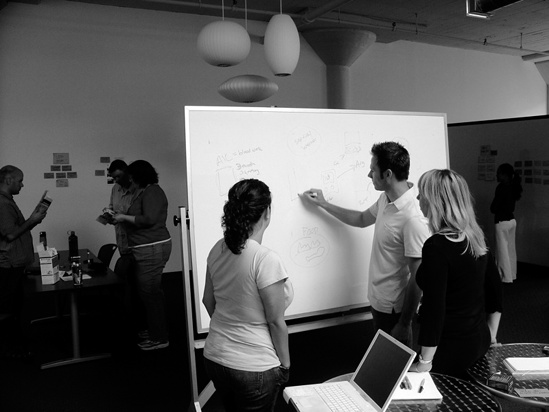The Idea Lab
A prototype of a clearly desirable experience can have dramatic impact by making an idea actionable and exciting. Design gives form to ideas so that their value can be communicated, evaluated, and improved.
At Adaptive Path, we put aside time twice a week for open design sessions, all-hands meetings where we roll up our sleeves and leave titles and responsibilities at the door. For one hour, everyone in the room—project managers, administrative staff, clients—is a world-class designer. The most successful and engaging of these design sessions focus on translating ideas and insights into design artifacts.
For example, about two dozen of us worked along with a team from a major travel publication to rapidly convert their research findings and rough ideas into multiple sketches of web experiences (Figure 6-8). The magic of the design session for the client team was that we were able to convert a handful of their ideas into tangible solutions that could be further evaluated, improved, or eliminated from contention—and we did it all in just an hour. Traditional methods may have first involved requirements gathering or kept the design work in the hands of just one or two designers rather than a large and diverse group. Those approaches would have taken days or weeks to explore a smaller set of potential solutions.

Figure 6-8. Groups at Adaptive Path's open design sessions quickly ...
Get Subject To Change: Creating Great Products & Services for an Uncertain World now with the O’Reilly learning platform.
O’Reilly members experience books, live events, courses curated by job role, and more from O’Reilly and nearly 200 top publishers.

